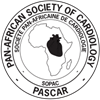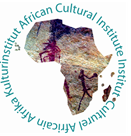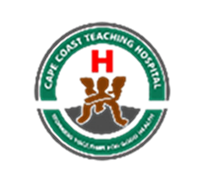Telemedicine - PASCaTS
Hauptmenü:
- Homepage
- Registration
-
History
- Faculty in Berlin
- Newsletter - Afroecho 2011, Joint PASCAR/AHS Echo Workshop & 8th African Heart Seminar (AHS)
- Challenges of cardio-thoracic surgery in the developing world - October 27-31, 2012, Barcelona, Spain
- PASCaTS Global Forum Sponsored at the 93rd AATS meeting in Minneapolis, May 4-8, 2013
- Post WHS Echo Course at the German Heart Institute Berlin - October 22nd, 2013
- 29th EACTS Annual Meeting 3-7 October 2015 in Amsterdam
- PASCaTS Forum 2016 in Cape Town, South Africa
- Programme Forum
- Programme EACTS
- Afro Echo Course 2019
- AfroValve Repair Camp 2019
- EACTS/PASCaTS Session2019
- Impressum
Telemedicine
History > Afro Echo Course 2019
Partner of the PSASCaTS







TELEMEDICINE: OPPORTUNITIES AND CHALLENGES OF TELEMEDICINE IN LOW & MIDDLE INCOME COUNTRIES
Prof. Dr. Charles Yankah*
Professor of Surgery, Charité, University of Medicine Berlin, Cardiothoracic & Vascular Surgeon, CEO, Founder Global Heart Forum, German Heart Centre Berlin.
President, Afrika Kulturinstitut e.V. & Pan-African Society for Cardiothoracic Surgery (PASCaTS)
Director of RHD Research, Director, Training Centre for Ultrasound Diagnostics (Echocardiography) Cape Coast Teaching Hospital, Ghana in Collaboration with German Heart Centre Berlin sponsored by Edwards Lifesciences Foundation*.
Director, German/Ghanaian Hospital Partnership Program with Cape Coast Teaching Hospital.
1. What is Telemedicine?
“Tele” is a Greek word meaning “distance “and “mederi” is a Latin word meaning “to heal”.
The World Health Organization (WHO) defines Telemedicine as, “The delivery of healthcare services, where distance is a critical factor, by all healthcare professionals using information and communication technologies for the exchange of valid information for diagnosis, treatment and prevention of disease and injuries, research and evaluation and for the continuing education of healthcare providers, all in the interests of advancing the health of individuals and their communities.”
2. Historical background
My clinical experience in telemedicine goes back to 1986 at the German Heart Centre where we monitored rejection episodes of our heart transplant patients by ecg signals from two wires inserted into the myocardium of the transplant connected to pacemaker battery implanted under the abdominal muscle of the patient.
In 14 century the traditional Chiefs of Ghanaian village Anomabu and the Ashanti palace used drums acoustic and smoke signals to warn civilians about disease epidemics.
In the 60’s the NASA was using tele-monitoring system to control the vital signs of their pilots and crew during missions.
3. What can telemedicine offer to promote sustainable programs in healthcare?
- Strengthen the health systems at all levels
- Improve quality care in health education, disease management, patient care, public health, research and administration
4. Our vision
- To define the trends, challenges and opportunities for applying digital health and telemedicine in Africa at primary, secondary and tertiary healthcare.
- How to create secondary and tertiary healthcare impact esp. cardiovascular health in the communities with over 80-90% users of mobile phones in Africa?
- Build a strong cardiology program to strengthen cardiac surgery services for efficient care.
- Advance networking and collaboration in the use of digital technology to improve cardiovascular health outcomes.
5. The Concepts of Telemedicine
Store, Forward and Remote Monitoring of Data (Availability of data at anytime)
To accelerate and improve medical attention and treatment in regions with limited resources and infrastructure
Patients‘ data interpretation service:
Transmission of images and vital parameters: Ecg, BP, Echo, Blood Sugar, INR, CT, MRI other laboratory results for
- Consultation
- Diagnosis (e.g. hypertension, congenital & acquired heart valve and structural diseases)
- Treatment (Medical/Surgery)
- Telemonitoring (pacemaker, AICD, blood pressure, blood sugar ecg etc.)
- Data banking
6. Telemedicine/ Telecardiology/e-Health For Africa
Africa remains the region with the highest costs for health care. The advances in technology in wireless connectivity will provide us important cost-effective new tools for diagnosis and treatment.
Telemedicine/cardiology offers rapid online information and interpretation and reporting services of images such as echocardiogram, MRI, CT scan, vital signs (BP, ecg,HR) and laboratory studies (Blood sugar, INR levels, Creatinin, Urea etc). A team of qualified and experienced experts (cardiologists, radiologists, clinicians and laboratory physicians and scientists) are required to offer a turn around time services between 8 – 22 hours and at emergencies. It will help doctors to evaluate and suggest the right treatment started at the earliest time possible.
7. Objectives of Outreach Videoconference Program
The outreach videoconference program in conjunction with our international cooperation provides an opportunity for promoting a sustainable dialogue between institutions in Asia, Africa and South America in the context of transfer and sharing of knowledge with colleagues on the African continent and world-wide.
Our monthly video conference program on the first Friday of the month at 15:00 hrs (MET) provides a north-south and south-south dialogue in cardiovascular medicine and surgery conceived to realize the objectives of our international cooperation.
7.1.To establish virtual classrooms, inter-hospital and inter-institutional video teleconferencing network.
7.2. To promote outreach educational programs, transfer of knowledge and know-how in cardiovascular medicine and surgery and facilitating multi-site national and continental interactive healthcare education.
7.3.To provide sustainable continuing educational programs for registrars, cardio-thoracic surgeons, cardiologists, cardio-thoracic anaesthetists, intensivists, nurses, perfusionists and other allied professionals.
7.4.To promote sharing of knowledge, stimulating scientific research work and international collaborative research programs.
8. Curriculum and non-curriculum telemedicine training programs in Africa
In 2007 the African Cultural Institute (ACI) and the Global Developing Learning Network (GDLN) of the World Bank started a telemedicine programmme in Ghana with GDLN-based video teleconference network across the African continent (12 countries see map).
The programme was organized at the GDL centres in Accra (2007) and in Dar es Salaam (2008) which bridged the transmissions of live surgery from Germany to the VTC network at Ethiopia, Ghana, Kenya, Mauritius, Tanzania and Uganda.
The programme continued at the German Heat Institute Berlin (Deutsches Herzzentrum Berlin) in 2012. It was initiated to implement various national-level projects and extending telemedicine services to medical institutions in African countries (Kenya, Nigeria and South Africa). It aimed at enhancing quality health systems in collaboration with premier medical institutions and provide healthcare education to strengthening healthcare services in the rural and remote parts of the country.
Telemedicine in African, Carribean and Pacific (ACP) states: ACP with its 79 member states is an ideal setting for tele-cardiology/telemedicine.
9. Collaboration in telemedicine in Africa
There is a need to define the Standards for Telemedicine Systems.
9.1. To promote government and private telemedicine solution providers, societies and associations to actively engage in creating awareness about telemedicine within the ACP countries.
9.2. For enhancing healthcare in women: Tele-sonography (utlrasound diagnostics) is highly beneficial in obstetrics and gynaecology (OB/GYN) for fetal, neonatal and maternal physiology monitoring from a distance. It could provide a detailed fetal and maternal morphological and structural echo images and the heart function from a distance.
9.3. To provide own telemedicine programmes within the context of south-south triangular cooperation.
9.4. To revolutionalise patientcare in remote areas of Africa, where there is no access to a cardiologist, pediatric cardiologist or radiologist.
10. Remote diagnosis to fill the capacity gap in the rural areas. Opportunities for applying telemedicine in Sub-Saharan Africa
In sub-Saharan Africa (SSA), excluding South Africa, with a population of over 1.1 billion people, there are only est. 40 qualified paediatric cardiologists and they are concentrated in the big cities.
A technology that provides screening of patients for whether they need treatment or not.
Patients in remote areas of SSA have no access to a diagnosis. They can't move on to the stage of management because there is no diagnosis, they don’t even know what the problem they have. Traditionally, patients have come to city clinics and hospitals by several means - either by train or bus or a car or on foot – to get an examination and diagnosis.
Application of satellite-based technology and fiber optic cables will provide 70-80 % mobile phone users in Ghana and elsewhere an efficient telecommunication infrastructure for developing patient-doctor, and patient-nurse relation and consultation system for personalized coaching and disease management program to improve treatment adherence, reduce cardiovascular complications and mortality.
A tele-echocardiography, could provide cardiac diagnosis and an appropriate management plan for many patients in remote areas. If they then need some interventions in terms of a heart catheterization or surgeries they can get on a train or bus and go to a specialized centre to have it done.
11. How to implement telecardiology system
11.1. Training of medical technicians/nurses in echocardiography (M-mode, short and long-axis view, two-/four-chamber views etc). InterCore-PASCaTS trained two nurses for itsr RHD research in Ghana to screen 4763 students for RHD.
11.2. Trained technicians performing echocardiography (echo), using the right technique and transferring the proper images to central echo lab for interpretation.
12. Cost: Low cost solution
12.1. Investment for echocardiography machine
12.2. Video phone hooked to the echo machine. The video phone is connected via ISDN and the physician at the central echo laboratory can view the echo images that have been made. It’s a real-time review.
- Running cost/month
- Tele-echo service (transmission of data/findings to patients and practitioner (patient’s physician)
13. Two techniques for transmitting echo images
13.1. One solution is a videoconference. A video phone can be hooked to the echo machine. The video phone is connected via ISDN and the physician in the city echo laboratory can view the echo image that is being done. It’s a real-time review. The echo lab cardiologist looks at the echo image and talk with the remote echotechnician. He also sees the patient or parent and and talks with them when the echo is done. So it has certain advantages.
13.2. Web-based method. With a low-cost software one can plug in from the echo machine (heart ultrasound) straight on to a computer. It’s uploaded onto a server and then it is downloaded to a cardiologist who reviews the images and informs the patient about the diagnosis the same day or next day. This approach is an alternative (asynchronous) solution especially when there is a shortage of cardiologists.
13.3. Telecommunication systems deployed in telemedicine solutions
There is penetration of satellite into all these remote areas.
Although satellite is good for text data and voice, it is not great for images because of the delay time. That’s the problem. ISDN video is a good preferable link but the ISDN connections are limited in small towns in ACP states. Even cable modems are not available in many small towns. One could probably see a boom in this kind of technology in the next decades.
14. Key factors that have made telecardiology work.
Requirements
- Setup protocol for telemedicine solutions
- Bandwidth
14.1. Type of ultrasound device,
- Compatibility (e.g with DICOM etc.)
- In certain situation on-site inspection of the IT manager from the hospital to set it up.
- Once the remote infrastructure is figured out the interconnectivity can be setup.
15. The workflow
15.1. For emergencies the cardiologist will be reached by his cell phone and ask them to review the case in real time.
15.2. For routine echo interpretation the remote echo technician sends an e-mail, sms requesting a review of the echo images via the web-based system.
16. Recommendations to institutions and health authorities that are looking to implement a remote imaging program
16.1. Telemedicine can revolutionize patient care in remote parts of the ACP countries where there is no access to a cardiologist, pediatric cardiologist, or radiologist.
16.2. The project should have low-cost solutions. High-cost solutions are not practical.
16.3. It should be a robust system that is not completely infrastructure dependent; they need to work on an ISDN or cable line.
16.4. If it is used effectively, remote diagnostic imaging can certainly make life much better for patients.
17. Telemedicine benefits in summary
- Personalized coaching/ disease management program.
- Enhances public healthcare educational programs (prevention, disease management and aftercare),
- Improves treatment adherence, reduce cardiovascular complications and mortality
- provides collaborative learning opportunities in clinical practice, skill training and clinical science to improve patient care,
- transcends geographical barriers to bring colleagues closer and closer in a network,
- facilitates sharing of clinical experiences and of recent advancements in medicine to improve patient care and outcome.
Prof. Charles Yankah, MD, PhD, FETCS
Budapester Str. 39
10787 Berlin
E-mail: cyankah@web.de
Mobil: +49-172-3020143